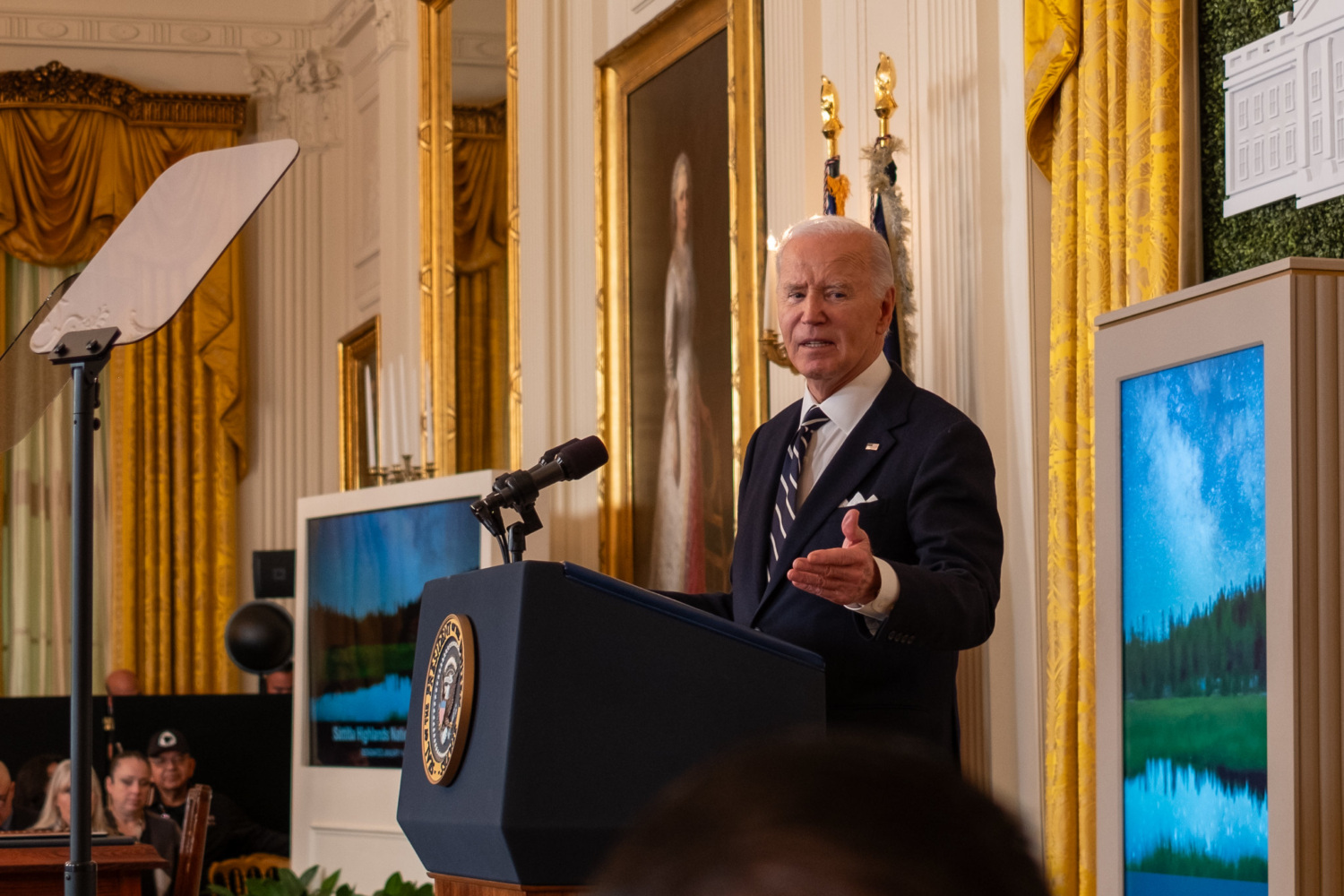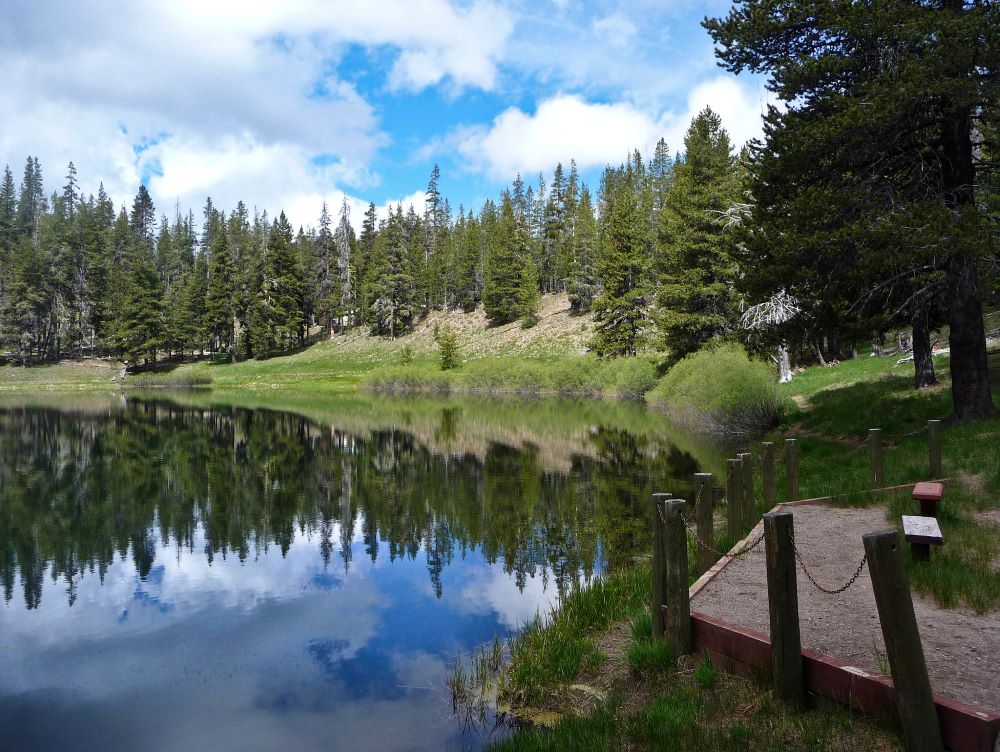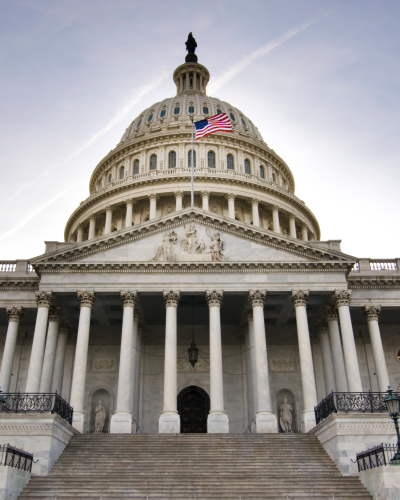
Good Climate News Roundup – March 2025
Mar 31, 2025
 President Biden announces his designation of the new Chuckwalla and Sáttítla Highlands national monuments. Credit: benmacaskill via Flickr
President Biden announces his designation of the new Chuckwalla and Sáttítla Highlands national monuments. Credit: benmacaskill via Flickr
The last month has been a rollercoaster for climate policy, to say the least. With their administration coming to a close, President Biden and Vice President Harris continued to make incredible strides to advance climate progress. In contrast, the new Trump administration has already reversed several critical climate actions and issued executive orders to expand fossil fuel production while cutting clean energy.
It is clear that the fight for climate action is now more important than ever, and so is celebrating our progress. Stay in touch to learn about actions you can take to protect our climate and democracy as we continue the fight to protect people and the planet.
In the last weeks of his administration, President Biden ushered several major conservation wins across the finish line. Following decades of advocacy by local and Tribal leaders, President Biden and Interior Secretary Haaland designated two new national monuments in California, the Chuckwalla and Sáttítla Highlands National Monuments. These monument designations protect and honor landscapes rich in ecological, recreational, and cultural resources that sustain local Indigenous and other communities.

The new monument designations are also important milestones in mitigating the impacts of the climate crisis. Sáttítla Highlands National Monument protects a unique volcanic landscape and watershed that supplies water to millions of people and sustains local agriculture. Chuckwalla National Monument hosts solar and wind clean energy projects, demonstrating that clean energy and conservation practices can coexist.
President Biden also issued an executive order withdrawing 625 million acres of U.S. waters in the Gulf of Mexico, Alaska’s Northern Bering Sea, the coastal waters of Oregon, Washington, and California, as well as the entire east coast, from future oil and gas leasing. The withdrawals will protect marine ecosystems, coastal communities, and local economies from the negative effects of offshore drilling. This move is an important step in the transition away from polluting oil and gas and toward a clean energy future.
Though President Trump issued his own executive order attempting to overturn these protections from offshore drilling on his first day in office, his authority to do so is in question and the order is likely to face legal challenges.
In its first weeks, the Trump administration has moved to cut environmental protections and make life easier for polluters. However, climate advocates have two huge wins to celebrate in the push to hold polluters accountable for their environmental impact.
Earlier this month, the U.S. Supreme Court turned down appeals from several major oil companies, including Sunoco, Shell, and others, seeking to block states from bringing climate lawsuits against them. This is a major win for state-level climate litigation and could pave the way for more states to sue Big Oil and Gas to hold them accountable for climate damages and harm to communities.
At the state level, New York became the second state to pass legislation requiring major fossil fuel companies to pay for the costs of damage caused by climate change. New York follows the lead of Vermont, which enacted the first state Climate Superfund law last spring. The new law will take the burden off of New York taxpayers, who are currently footing the bill for climate change adaptation and disaster recovery efforts, and hold polluters accountable for knowingly causing damage to the environment and public health and safety.
Thanks to federal investments from President Biden’s affordable clean energy plan, clean energy is booming across the country. Since 2022, federal investments have spurred 751 new or expanded clean energy projects, created 406,000+ new jobs, and driven $422 billion in new clean energy investments across the country. These impressive numbers show the strength of the clean energy transition and prove that a healthy economy and a healthy environment go hand in hand.

As part of the nationwide transition to clean energy, we are also seeing incredible progress at the local level. The city of Chicago announced that all of its over 400 municipal buildings, including two international airports and two of the world’s largest water treatment facilities, now run on 100% clean energy. This transition will cut an estimated 290,000 metric tons of carbon dioxide emissions annually – equivalent to taking 62,000 cars off the road.
Communities nationwide are turning to innovative solutions to lower emissions from the transportation sector, which is responsible for nearly a third of U.S. greenhouse gas emissions. New York City is now utilizing a congestion pricing program which charges drivers a toll to enter busy parts of Manhattan. The Manhattan Transportation Authority (MTA) estimates that the program will lead to 80,000 fewer vehicles entering Manhattan each day, resulting in lower pollution levels and improved air quality for NYC residents. The program will generate an estimated $500 million in annual revenue which will be used to invest in improving transportation infrastructure and accessibility in the city.
LCV’s state affiliate New York League of Conservation Voters celebrated the implementation of the congestion pricing program, which faced a tough and often uncertain road in the state legislature before its passage. Gov. Hochul signed it into law in late November, and is now defending the program against President Trump’s threads to rescind its federal approval.
Across the country in California, the state’s Air Resources Board received approval from the Biden-Harris administration to enforce a 2022 rule requiring all new ferries in the state to be zero-emission by the end of the 2025. The rule aims to cut emissions from California’s harbors, which are responsible for an estimated 165 tons of diesel particulate matter and 5,475 tons of nitrogen oxides emissions each year, and reduce cancer risk for those living in nearby communities.
Thanks to the hard work and dedication of President Biden, Vice President Harris, and climate champions in Congress, the last four years have seen amazing progress in tackling the climate crisis and advancing the clean energy economy, including:
Passing the largest climate bill in history– the Inflation Reduction Act– which has resulted in the creation of 400,000+ jobs and spurred $422 billion in new clean energy investments.
Protecting 674 million acres of U.S. lands and waters, more than any other President in this country’s history.
Establishing 10 new national monuments and expanding two existing monuments.
Replacing half a million lead pipes, bringing safer drinking water to 1.2 million people.
And so much more!
Watch LCV staff share their favorite climate wins:
THE BEST THING YOU CAN DO RIGHT NOW
President Trump has called climate change a hoax and has shown that he’s willing to undo our movement’s progress addressing the climate crisis, along with access to clean air and water. Make your voice heard: Sign the petition telling Congress to stand strong and protect hard-won climate and environmental protections.
Tell Congress to Stand Strong for Climate